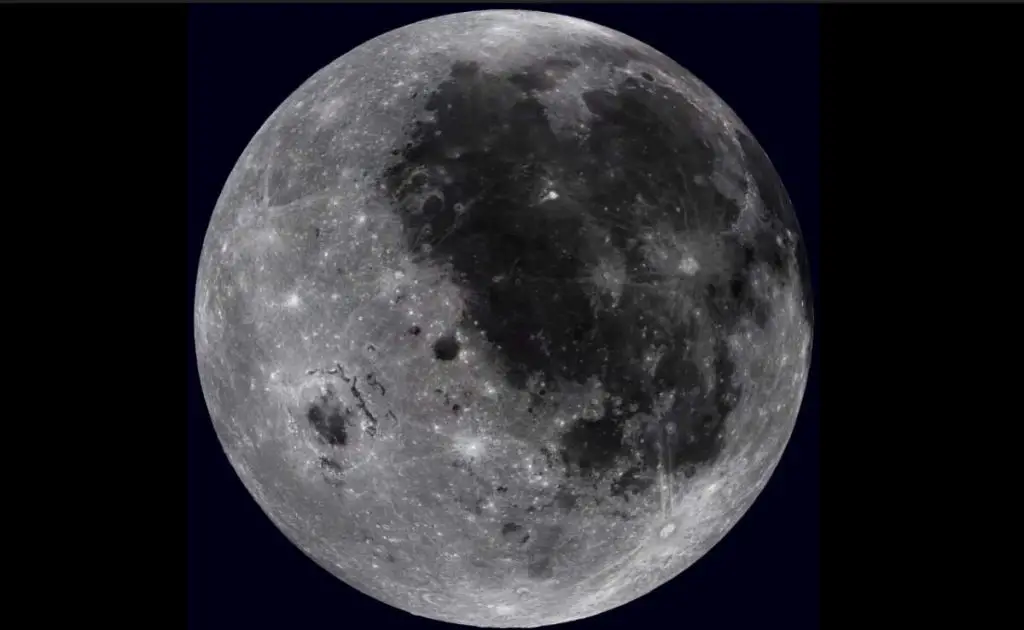The amazing video below is a showcase of spectacular imagery obtained by Japan Aerospace Exploration Agency’s (JAXA) Kaguya/SELENE spacecraft which orbited the Moon for a year and eight months and returned stunning views from its HDTV camera suite. A must-watch!
Nicknamed Kaguya (which was selected by the general public, see Notes 1), SELENE (Selenological and Engineering Explorer) was the second Japanese lunar orbiter spacecraft (see Notes 2).
The spacecraft was launched on September 14, 2007, from Tanegashima Space Center (TNSC) in Japan. It orbited the Moon for 20 months. On June 10, 2009, the main orbiter was instructed to impact the lunar surface near the crater Gill, which is located near the southeastern limb of the Moon.
It consisted of a main orbiting satellite at about 100 kilometers (62 miles) altitude and two small satellites (Relay Satellite and VRAD Satellite) in polar orbit.

The mission’s major results include:
- Improved lunar global topography maps. This detailed altitude and geological data are provided to Google for free to make Google Moon 3-D.
- Detailed gravity map of the far side of the Moon.
- First optical observation of the permanently shadowed interior of the crater Shackleton. Named after Antarctic explorer Ernest Shackleton, it is an impact crater that lies at the south pole of the Moon. The crater is 21 km in diameter and 4.2 km deep. The interior of the crater is perpetually in shadow (a crater of eternal darkness). The low-temperature interior of this crater functions as a cold trap that may capture and freeze volatiles shed during comet impacts on the Moon.
- Evidence of Earth’s oxygen being transported to the moon via magnetospheric ions.
KAGUYA was descended to the 50 km (31 miles) altitude from February 1, 2009, and then was descended again to 10-30 km (6.2-18.6 miles) at a lower altitude (Perilune) from April 16, 2009. Finally, KAGUYA was impacted to the southeast of the near side of the Moon on June 10, 2009 (GMT).

Related: Amazing Moon facts
Notes
- Kaguya is the protagonist of Kaguya-hime no Monogatari, “The Tale of Princess Kaguya” or “The Tale of the Bamboo Cutter”, a mysterious girl from the Moon, who was discovered as a baby inside the stalk of a glowing bamboo plant. It is a 10th-century Japanese Monogatari (fictional prose narrative) containing Japanese folklore. It is considered the oldest extant Japanese prose narrative although the oldest manuscript dates to 1592.
- Launched on January 24, 1990, the Hiten Spacecraft was Japan’s first lunar probe, the first robotic lunar probe since the Soviet Union’s Luna 24 in 1976, and the first lunar probe launched by a country other than the Soviet Union or the United States. It was also the first deep space probe that performed an aerobraking maneuver (flying the vehicle through the atmosphere to slow down it). On March 30, 1991, after the ninth lunar swing-by and second aerobraking maneuver, the primary mission of Hiten was concluded.
Sources
- SELENE on Wikipedia
- Hiten spacecraft on Wikipedia
- “The Tale of the Bamboo Cutter” on Wikipedia
- Shackleton crater on Wikipedia
- “Kaguya Orbiter’s Haunting Pictures Show Earth Rising Over the Moon” on the National Geographic website
- “KAGUYA (SELENE)” on the Japan Aerospace Exploration Agency’s (JAXA) Website
- Space Shuttle Endeavour’s Touchdown Meets Columbia’s Salute [An amazing photo from the past] - February 29, 2024
- Moon Landings: All-Time List [1966-2024] - February 23, 2024
- From Orbit to Ordinary: 10 Earthly Applications of Space Technology - January 23, 2024